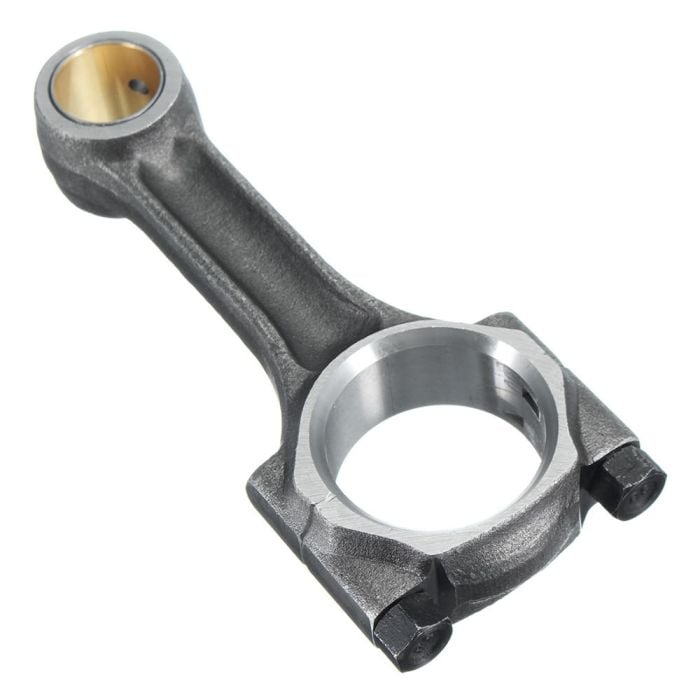Maintain peak performance with a reliable clp engine.
Maintain peak performance with a reliable clp engine.
Blog Article
Exactly How a Clp Engine Can Enhance Performance in Different Industries
The introduction of CLP engines notes a considerable change in operational effectiveness across various markets, driven by their ability to enhance gas consumption and decrease downtime. Industries such as manufacturing and logistics stand to get considerably from their durable layout and consistent power result, which promise to improve procedures and enhance efficiency. As companies increasingly focus on sustainability along with efficiency, the function of CLP engines comes to be even a lot more critical. What stays to be seen is just how these advancements will shape the future landscape of commercial procedures and their influence on wider financial fads (clp engine).
Summary of CLP Engines
CLP engines, or Continuous Fluid Propellant engines, represent a substantial innovation in propulsion modern technology, specifically for area applications. These engines use a constant feed system that enables the sustained expulsion of propellant, leading to boosted performance and efficiency compared to traditional strong or hybrid propulsion systems. By keeping a continuous flow of fluid propellant, CLP engines can accomplish more specific thrust control, which is essential for steering spacecraft in numerous objective scenarios.
The layout of CLP engines integrates advanced products and ingenious fuel administration systems. clp engine. This results in reduced weight and boosted reliability, important elements for long-duration space goals. Moreover, the constant procedure reduces the threat of combustion instability, an usual challenge in standard rocket engines.

Benefits in Production
The production of Constant Liquid Propellant (CLP) engines provides a number of notable benefits that boost both performance and cost-effectiveness. Among the main benefits is the streamlined manufacturing procedure, which decreases the complexity associated with traditional propulsion systems. By making use of fluid propellant, producers can achieve greater accuracy in engine efficiency, causing optimized power result and decreased waste.
Additionally, CLP engines facilitate a greater degree of modularity, permitting less complicated assimilation into various production lines. This versatility can dramatically reduce preparations and improve overall functional versatility. The use of CLP modern technology likewise tends to decrease the requirement for extensive upkeep because of less moving components, which equates into minimized downtime and operational expenses.

Applications in Logistics
Leveraging Continual Fluid Propellant (CLP) engines in logistics supplies substantial benefits in functional performance and integrity. These engines give a durable solution for numerous transport demands, making it possible for the smooth activity of products throughout large distances. The fundamental design of CLP engines enables consistent power output, which translates right into smoother and a lot more foreseeable transportation routines.
One of the key applications of CLP engines in logistics remains in sturdy products transport, where they can drive both ground and aerial vehicles. Their capacity to keep high efficiency under differing tons conditions guarantees that shipment timelines are satisfied, thus enhancing customer satisfaction. In addition, CLP engines can be integrated into automated logistics systems, facilitating real-time monitoring and maximizing course preparation.
Additionally, the toughness click here for more of CLP engines minimizes upkeep downtime, enabling logistics business to maximize their functional abilities. This is particularly valuable in warehousing procedures, where efficiency in managing and transporting goods is crucial. As logistics remains to progress, the assimilation of CLP engines stands for a forward-thinking strategy that not just enhances efficiency but likewise supports the market's expanding demands for integrity and rate.
Impact on Power Effectiveness
Just How do Constant Fluid Propellant (CLP) engines enhance energy performance in transportation? CLP engines use a regular flow of liquid gas, optimizing combustion procedures and maintaining a stable drive result. This design reduces power losses associated with conventional burning engines, where gas delivery can vary and bring about inefficiencies.
The constant procedure of CLP engines enables a more effective thermal cycle, causing higher particular impulse contrasted to standard engines. clp engine. This converts to reduced fuel usage for the exact same quantity of job done, considerably reducing functional prices throughout various transportation markets, consisting of aeronautics and maritime sectors
Furthermore, the capability of CLP engines to preserve ideal efficiency under differing lots problems lowers the need for frequent acceleration and deceleration, additionally enhancing fuel effectiveness. Enhanced power effectiveness not just adds to set you back financial savings but also results in reduce greenhouse gas discharges, straightening with international sustainability objectives.
Future Trends and Innovations
Arising advancements in Continuous Liquid Propellant (CLP) engine innovation pledge to change the landscape of transportation effectiveness and sustainability. As markets pivot toward greener choices, CLP engines stand at the center, integrating ingenious products and layout techniques that boost efficiency while decreasing ecological effect.
Among one of the most encouraging fads is the fostering of crossbreed systems that integrate CLP engines with renewable resource sources. This synergy can maximize gas usage and decrease emissions, why not try these out aligning with global look these up sustainability objectives. In addition, improvements in computational fluid characteristics (CFD) are promoting the layout of even more aerodynamically effective engines, leading to reduced drag and boosted fuel efficiency.
Moreover, the advancement of clever tracking systems is set to boost operational efficiencies. These systems utilize data analytics and IoT technology to maximize engine performance in real-time, ensuring that the engines run within their most efficient criteria.
As research study continues to check out alternate propellant solutions-- such as biofuels and synthetic gas-- the future of CLP engines looks appealing. By using these developments, markets can not just enhance their efficiency yet also add significantly to a cleaner, more sustainable future in transportation.
Final Thought
In conclusion, CLP engines stand for a substantial innovation in performance throughout multiple industries. The integration of innovative products and less moving parts minimizes upkeep needs, while positioning with sustainability goals positions CLP engines as a pivotal modern technology for the future.
Report this page